The effects of Z13752A, a combined ACE/NEP inhibitor, on responses to coronary artery occlusion; a primary protective role for bradykinin
- PMID: 10683191
- PMCID: PMC1571895
- DOI: 10.1038/sj.bjp.0703109
The effects of Z13752A, a combined ACE/NEP inhibitor, on responses to coronary artery occlusion; a primary protective role for bradykinin
Abstract
The effects on the responses to coronary artery occlusion of a combined ACE/NEP inhibitor (Z13752A) were examined in anaesthetized dogs. A 1 h infusion of Z13752A (128 microgram kg(-1) min(-1) intravenously) decreased arterial blood pressure (by 11+/-3%; P<0. 05) and increased coronary blood flow (by 12+/-4%, P<0.05). There were no other significant haemodynamic changes. Z13752A inhibited both NEP and ACE enzymes both in dog plasma and in tissue (lung ACE; kidney NEP). Pressor responses to angiotensin I in vivo were inhibited and systemic vasodilator responses to bradykinin were potentiated. When the left anterior descending coronary artery was occluded for 25 min, Z13752A markedly reduced the severity of the resultant ventricular arrhythmias. No ventricular fibrillation (VF) occurred (compared to 7/16 in the controls; P<0.05), and ventricular tachycardia (VT) was reduced (VT in 2/9 dogs treated with Z13752A cp. 16/16 of controls; episodes of VT 0.2+/-0.1 c.p. 10.7+/-3.3; P<0. 05). Reperfusion of the ischaemic myocardium led to VF in all control dogs but occurred less frequently in dogs given Z13752A (survival from the combined ischaemia-reperfusion insult 67% c.p. 0% in controls; P<0.05). Z13752A reduced two other indices of ischaemia severity; epicardial ST-segment elevation and inhomogeneity of electrical activation. These protective effects of Z13752A during ischaemia and reperfusion were abolished by the administration of icatibant (0.3 mg kg(-1), i.v.) a selective antagonist of bradykinin at B(2) receptors; the ischaemic changes in dogs given both icatibant and Z13752A were similar to those in the controls. We conclude that this ACE/NEP inhibitor is effective at reducing the consequences of coronary artery occlusion in this canine model and that this protection is primarily due to potentiation of released bradykinin. British Journal of Pharmacology (2000) 129, 671 - 680
Figures

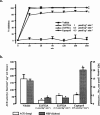

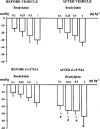
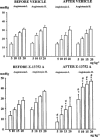
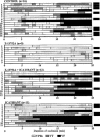

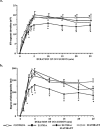
References
-
- DANIELL H.B., CARSON R.R., BALLARD K.D., THOMAS G.R., PRIVITERA P.J. Effects of captopril on limiting infarct size in conscious dogs. J. Cardiovasc. Pharmacol. 1984;6:1043–1047. - PubMed
-
- EHRING T., BAUMGART D., KRAJCAR M., HÜMMELGEN M., KOMPA S., HEUSCH G. Attenuation of myocardial stunning by the ACE inhibitor ramiprilat through a signal cascade of bradykinin and prostaglandins but not nitric oxide. Circulation. 1994;90:1368–1384. - PubMed
-
- ERDõS E.G., SKIDGEL R.A. Neutral endopeptidase 24.11 (enkephalinase) and related regulators of peptide hormones. FASEB J. 1989;3:145–151. - PubMed
-
- GOTO M., LIU Y.G., YANG X.M., ARDELL J.L., COHEN M.V., DOWNEY J.M. Role of bradykinin in protection of ischemic preconditioning in rabbit hearts. Circ. Res. 1995;77:611–621. - PubMed
Publication types
MeSH terms
Substances
LinkOut - more resources
Full Text Sources
Other Literature Sources
Miscellaneous

